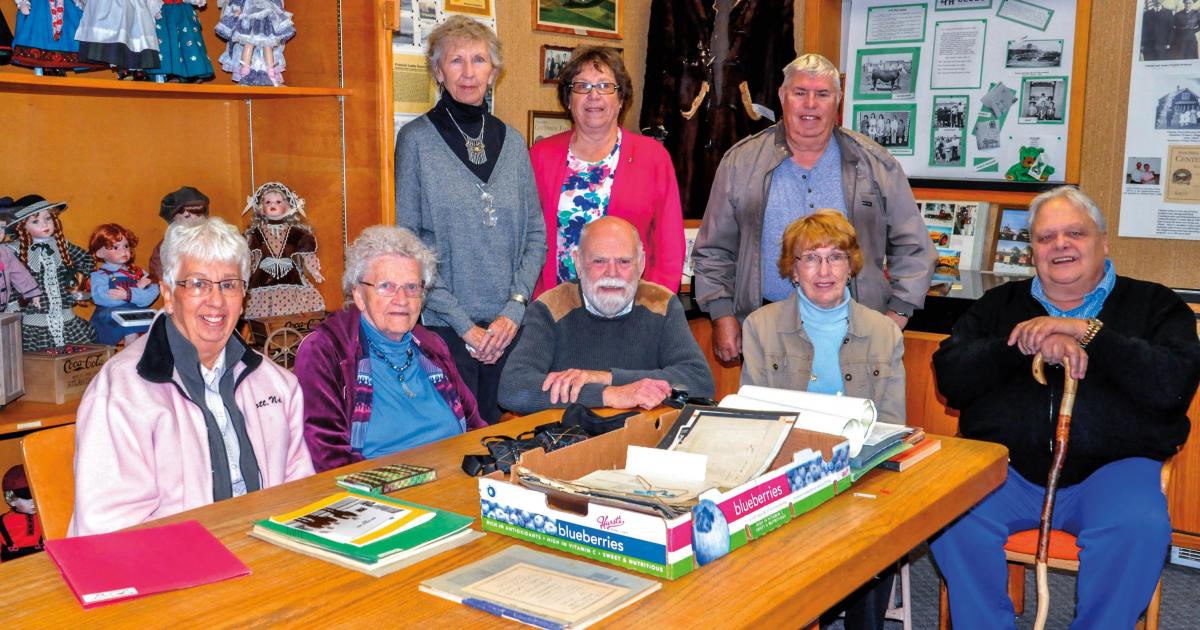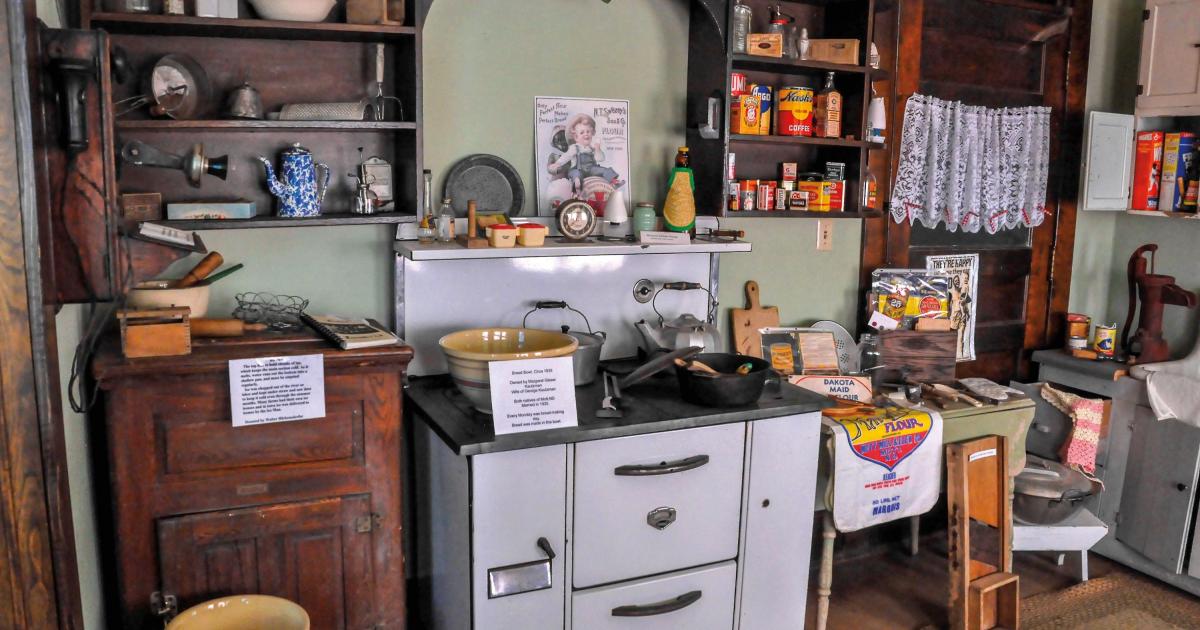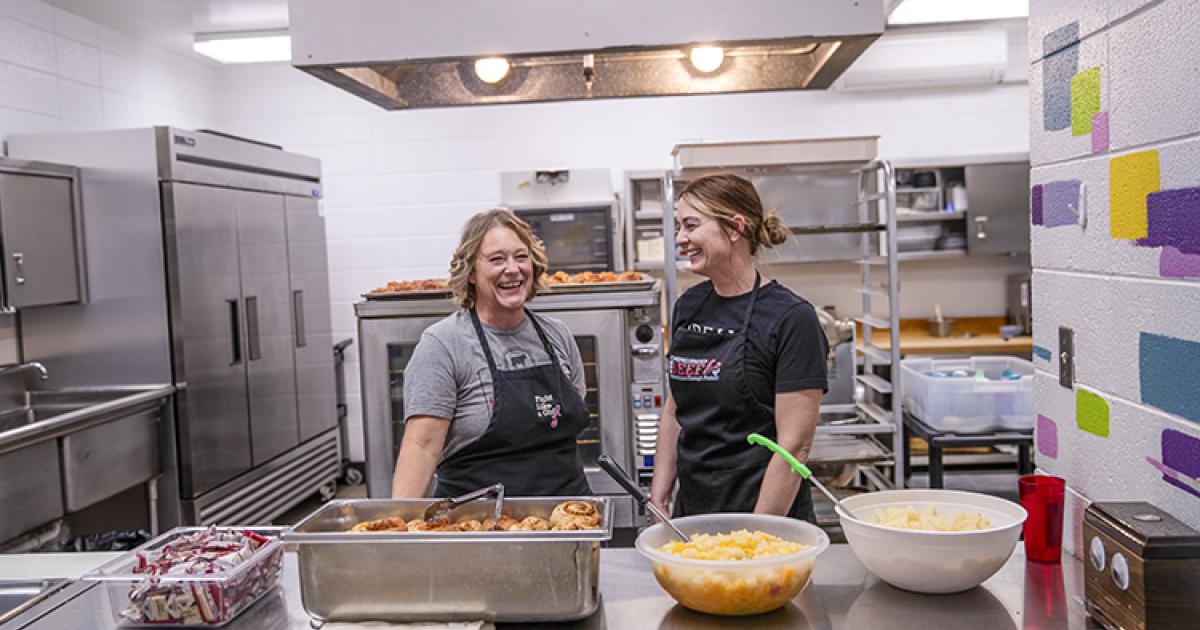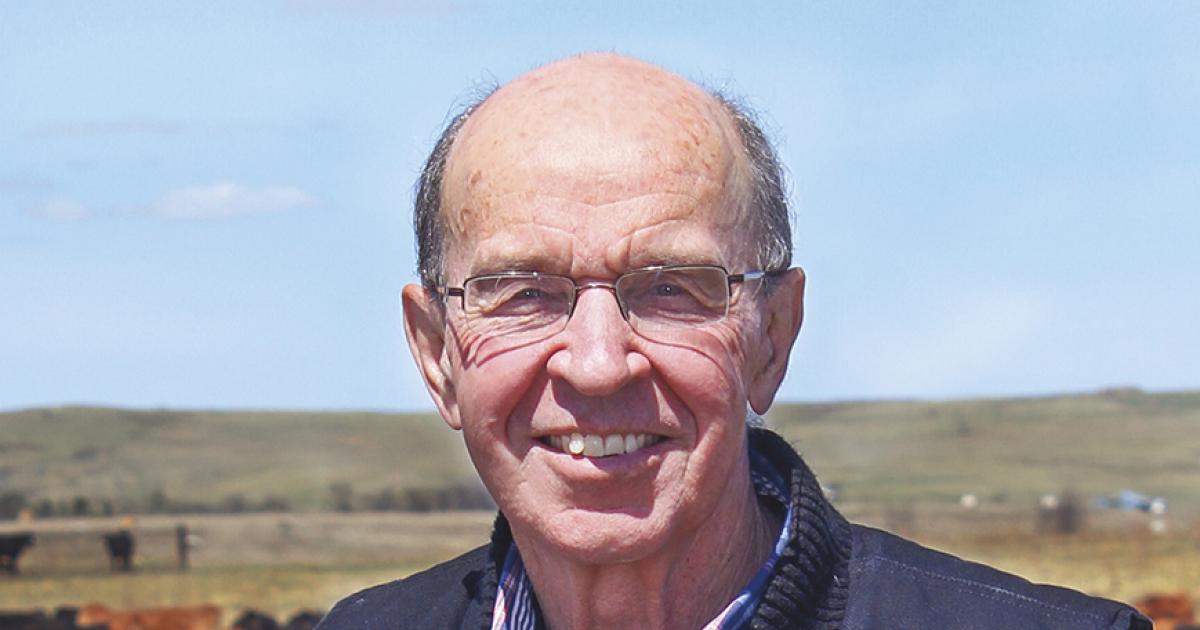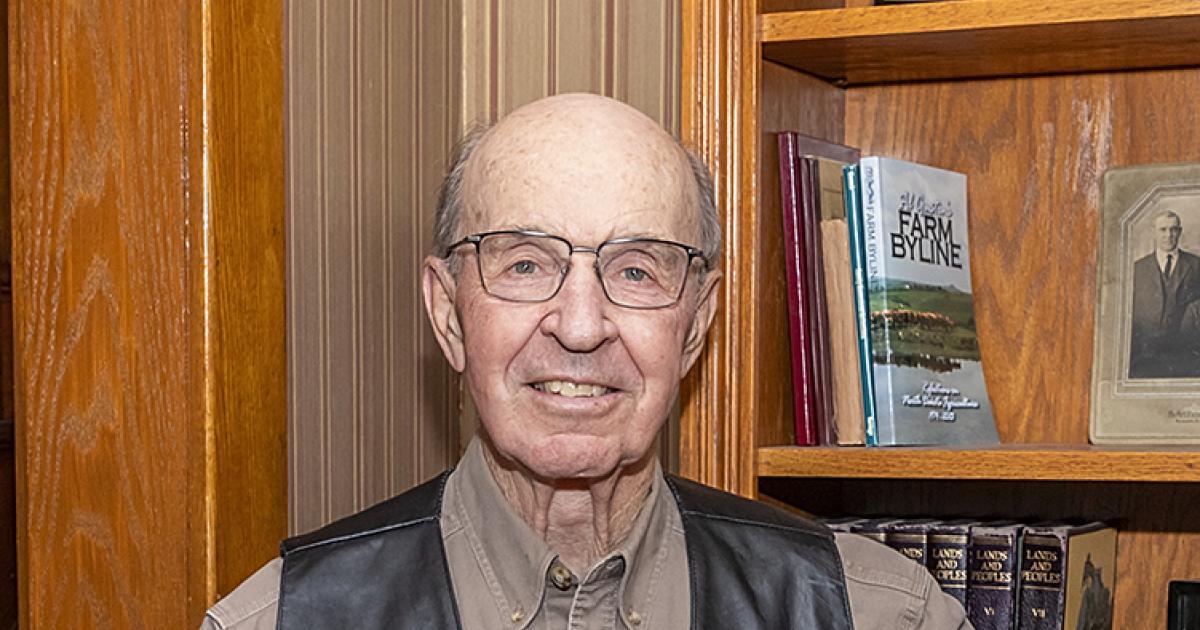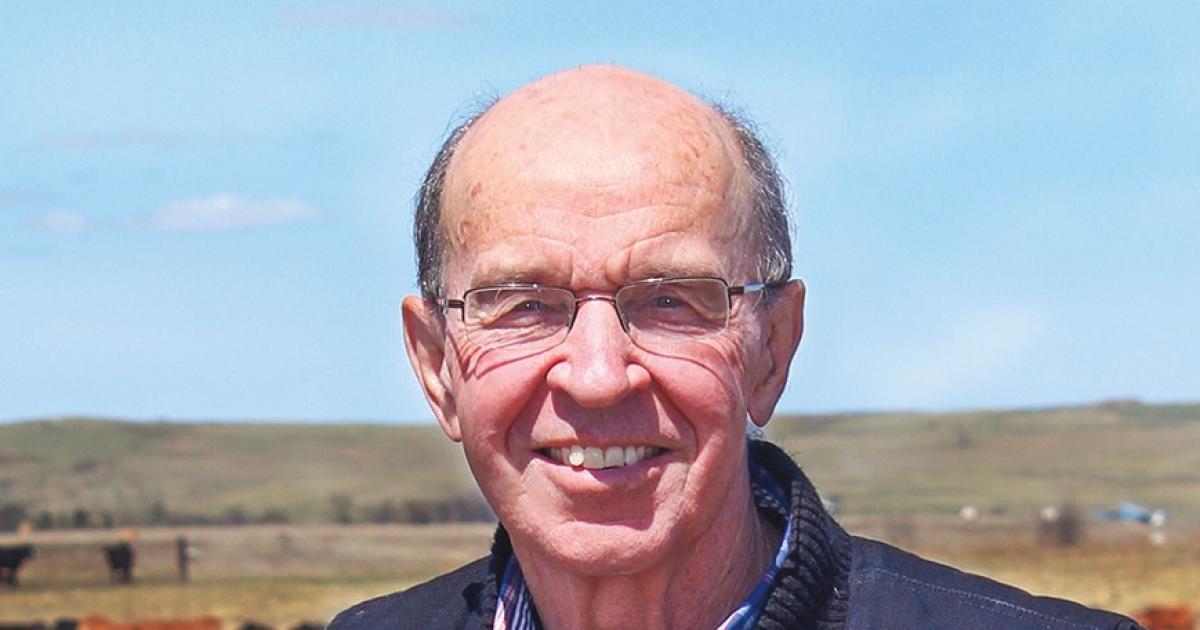By the beginning of the 20th century, communities of settlers, merchants and homestead farmers were forming small towns all across North Dakota. With 1889 statehood came organized counties, each requiring a county seat to become the home for law, order and local government. In the southwestern part of the state, Hettinger County was born, with Mott as the county seat.
Regular board meetings involving local residents working together help propel the Mott Gallery effort. Mott Gallery leaders include, front row, from left: Darlene Kallis, Twila Hawn, Kevin Carvell and Shirley Halvorson. Next to Halvorson is Tom Trousdale, Mott native/current Bismarck resident, visitor at a recent gathering of gallery leaders. Back row, standing: Joyce Hinrichs, Mary Messer, Jack Griffin. Included, but not pictured, in the gallery leadership group are Geno Sloan, and Bonnie and Ray Bieber. Messer and the Biebers are Slope Electric Cooperative members.
While always a small town – hitting a population peak of about 1,600 in the 1950s – Mott has been a cherished home to many generations of families. Among Mott’s 700 residents today are those whose love for their hometown has helped create the Mott Gallery of History and Art. The Mott Gallery now occupies a landmark historic bank and office building on the town’s main street.
The beginnings of the gallery started in a church off Mott’s main street. In 2005, the bank building was offered to the gallery board. So, gallery items were moved from the church to the bank building, where the gallery has grown. An agriculture annex was added, providing room to add tractors and other farm and ranch items for display.
DEDICATED BOARD, SUPPORTIVE DONORS
Joyce Hinrichs is current president of the Mott Gallery board of directors. This board consists of individuals who meet regularly to keep up the work of receiving and displaying items of local historical value. She says Mott residents are responsive to the continuing need for the gallery to receive personal and family possessions which might be displayed.
“People will often stop one of our board members and say, ‘I think you should have this item that our mom and dad left.’ Then that family’s history becomes part of our area history, to be enjoyed and studied by their upcoming young people,” Hinrichs says.
Fellow board member and art director, Shirley Halvorson, a retired Mott school teacher, says people donating to the gallery attach high value to these items and trust the gallery will care for them.
“We’ve got some wonderful memories and items from people that have come before us,” Halvorson says. “They want them preserved well. They don’t just want things tossed in a heap. This is why we’ve worked hard to get well-established. We want their items clean and neat, and want to have their memories cherished.”
Throughout the ground floor area, visitors can view many separate, striking displays, including items of military, athletic, household, business, dolls and toys, and literary significance. There is a reading and research area, where a visitor can study family history collections and other historical documents, and search for items of interest.
The former lobby area of the old bank, inside the front entrance, is reserved for artwork, and pieces from the gallery’s artist of the month.
Hinrichs and Halvorson stress that local board members and Mott residents play key roles assuring the display, care and integrity of items the gallery houses. They salute Ray Bieber for care of the agricultural equipment annex and military room; Mary Messer, board secretary/treasurer, whose knowledge of Mott history enables her to set up the rooms with historical pieces, and to tell their story; Kevin Carvell, for bringing historical accuracy integrity to the gallery; and Darlene Kallis, gallery historian, who assists users of the reading and research area, and who helps this area grow, by finding and adding to the collections.
NEW USE FOR MEMORABLE UPPER LEVEL
By an old staircase – or new elevator – connecting the ground floor with the second floor, visitors gain access to more richly detailed community history. On the second floor, an early 1900s household has been meticulously assembled, including a living room, kitchen, dining room, laundry and bedroom. Other second floor displays include a recreated rural school classroom, present and past history of the town school, and an all-faith room, with historic pieces from local churches.
Use of the spacious second floor of the building has been key to telling the rich story of the Mott community. When the Commercial Bank of Mott operated from the ground floor, the second floor served as a business and health care hub. The gallery board has counted 17 different businesses that operated on the second floor, including medical, dental, optometric, public health, accounting and agribusinesses.
As the board located several displays on this upper level, it determined public access demanded that an elevator be installed. So, a fundraising effort was started. “We raised the $45,000 needed very quickly. Our local folks, and city, one more time, supported us,” Hinrichs says. She says people had vivid memories of visiting doctors, nurses and other offices on that floor, and wanted to be able to revisit that area, now housing important Mott history.
SHOWCASING LOCAL ARTISTS, PIECES
Displaying the work of artists from many areas is a major priority for the Mott Gallery in each gallery season. The board of directors is dedicated to receiving and displaying pieces of art created by locals and other North Dakota artists.
“We just thought we’ve got so many talented people here, with all kinds of artwork, that living up to our name as a gallery we needed to have displays for art,” Halvorson says.
This dedication to art has resulted in a wide variety of art being displayed, including spotlighting an artist of the month. This spotlight includes hosting an open house for each of these artists.
The gallery prominently displays the unique artwork and the sculpting of Oscar Rogers. He was a hometown lad, who would go on to be the local newspaper editor. Rogers moved from drawings, to paintings, to sculpture with metal pieces. A collection of Rogers’ artwork is on display, including two unique metalwork pieces – “The Biker Thinker” and “Tea Time Lady.”
The Gallery board has extended the emphasis on art to include teenaged artists and their creations. Families, parents and grandparents are encouraged to provide teens’ artwork to the Mott Gallery. This outreach is meant to create appreciation of the Mott Gallery among young people.
“When we are gone, it will be up to them to continue this, so this is our way of promoting ourselves with younger people and getting them interested while, in turn, we are supporting young artists for the future,” Hinrichs says.
STERN HOMESTEAD
Another key project for the Mott Gallery board of directors is encouraging preservation and visitation to the Stern Homestead, two miles east of Mott. Board member Geno Sloan leads this effort. In 2008, Sloan and the board helped gain the addition of the Stern Homestead to the National Register of Historic Places.
The Stern Homestead was settled by the John Stern family, Germans from Russia immigrants. By 1907, they had built and were occupying a unique, long house-barn combination. The single house and barn building, fortified with local sandstone rock, was a design these immigrants brought from Russian homelands. It provided living quarters, storage and farm animal shelter under one roof, protected together from fierce weather elements.
“There are not very many of these still standing in North Dakota,” Halvorson says.
Group tours of the Stern Homestead may be arranged by contacting Geno Sloan at 701-824-2861.
The Mott Gallery of History and Art is open for public visitors from 1-4 p.m. MT Thursdays and Saturdays, from Memorial Day to Labor Day. The board of directors has publicized local contact information on the front door, for visitors who want to gain access to the gallery and museum outside of these hours. Financial support for the gallery is completely voluntary; visitors are asked to make a free will offering.
“We do let visitors know their generosity is greatly appreciated,” Halvorson says.
For more Mott Gallery of Art and History information go to www.discovermott.com/history-art/history-art-gallery.html(link is external). Follow Mott on the Friends of Mott site on Facebook.
Kent Brick is editor of North Dakota Living. He can be reached at kbrick@ndarec.com.


